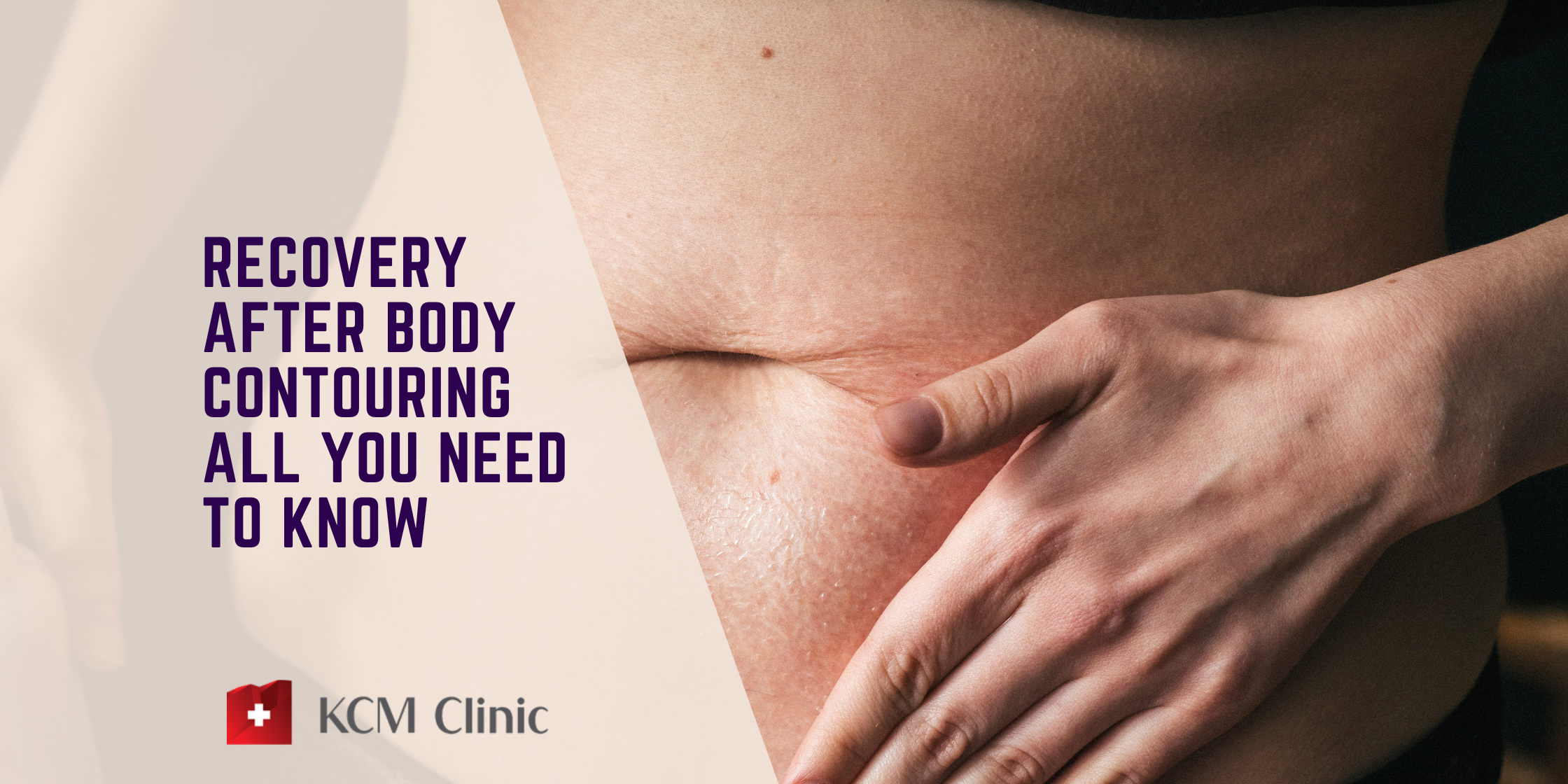Undergoing body contouring procedures can be transformative, helping individuals achieve their desired aesthetic goals. However, it’s important to understand that these surgeries, such as tummy tuck, body lift, breast lift, and arm lift, require a proper recovery period to ensure optimal healing and long-term results. In this article, we will explore the recovery process for these body contouring procedures, providing valuable insights and guidance to support you during your post-operative journey.
What is body contouring?
Body contouring comprises a series of surgical procedures that aim to improve the appearance of specific areas of the body. Patients choose to undergo these procedures especially when they have lost a massive amount of weight and skin sags as a result. This particularly applies to individuals who had bariatric surgery: procedures such as gastric sleeve, gastric bypass or SASI-S can help patients lose excess weight; while they are overjoyed at their weight-loss results, skin may be loose and sagging. Areas of the body that are typically affected are the breasts, the tummy, the hips and the arms. It is often not just a matter of aesthetics: overhanging skin can also cause rashes and discomfort. Every body contouring procedure tackles one specific area of the body. Discuss with your doctor what procedure would best help you. It is also important to be aware that this type of surgery implies following all the post-op guidelines carefully and that recovery might be lengthy. For this reason, you will find a detailed overview of what recovery typically looks like for each body contouring procedure. Get in touch with us any time if you need clarifications or would like to have a consultation!
Body contouring: Recovery
Your recovery time after body contouring will depend on what procedures you had. We are listing below how recovery looks like after each procedure. Don’t forget that each individual heals at their own time!
Recovery after a tummy tuck
Tummy tuck surgery aims to address excess abdominal skin and fat, as well as tighten weakened abdominal muscles. Here are key aspects of the recovery process.
Immediate post-surgery
Following the procedure, patients can expect to have drainage tubes and wear compression garments to minimise swelling. Your doctor may prescribe medications to manage any pain or discomfort. Rest and limited movement are essential during this phase.
Initial weeks
During the first few weeks, swelling and bruising gradually subside. Patients should follow their surgeon’s instructions on wound care, including keeping the incision sites clean and dry. Gentle walking is encouraged to promote blood circulation, but strenuous activities should be avoided. Most individuals can gradually resume light activities but should still avoid heavy lifting or intense exercise. Regular follow-up appointments with the surgeon are necessary to monitor progress and ensure proper healing.
Recovery after a breast lift
Breast lift surgery is designed to address sagging breasts, creating a more youthful and lifted appearance. The recovery process involves the following considerations.
Initial post-op period
Patients will have bandages and a supportive surgical bra to minimise swelling and provide necessary support. Prescription pain medications may be provided to manage any
discomfort. It is important to avoid strenuous activities and protect the incision sites.
Weeks 1-2
Swelling and bruising gradually subside during this time. Patients should continue wearing a supportive bra as advised by their surgeon. It’s crucial to avoid activities that strain the chest muscles and refrain from lifting heavy objects.
Weeks 3-4
Many patients can resume light activities, but intense exercise or activities that put strain on the chest area should still be avoided. Regular follow-up appointments will be scheduled to assess progress and address any concerns.
Recovery after a body lift
Body lift surgery is a comprehensive procedure that targets multiple areas, such as the abdomen, thighs, buttocks, and lower back. The recovery process typically involves the
following.
Initial recovery
Similar to tummy tuck surgery, patients will have drainage tubes, wear compression garments, and manage pain with prescribed medications. Rest and limited movement are
crucial in the initial weeks.
Weeks 2-4
As the body heals, patients may gradually increase their activity level under the guidance of their surgeon. However, strenuous exercise or heavy lifting should still be avoided. Regular follow-up appointments are necessary to monitor progress and address any concerns.
Weeks 6-8 and beyond
By this stage, patients can often resume their normal activities, including exercise and physical exertion. However, it is important to follow the surgeon’s guidelines regarding gradual return to regular exercise routines.
Recovery after an arm lift
Arm lift surgery targets excess skin and fat in the upper arms, resulting in improved arm contour. The recovery process typically follows these stages.
Immediate post-op care Patients will have bandages or compression garments on their arms to minimise swelling and support the healing process. Pain medications may be prescribed, and rest is crucial during the initial days.
Weeks 1-2
Swelling and bruising will gradually reduce, and patients may transition to wearing a compression sleeve. Light activities and gentle movements are encouraged, but strenuous
exercise should be avoided.
Weeks 3-4
Patients can typically resume light activities and gradually increase their arm movements. However, it is important to avoid heavy lifting or activities that strain the arms. Regular
follow-up visits are essential for monitoring progress and addressing any concerns.
How can you help your body contouring recovery along?
Recovering from body contouring procedures, including tummy tuck, body lift, breast lift, and arm lift, requires patience, adherence to post-operative instructions, and close collaboration with the surgical team. Understanding the recovery process for each procedure empowers individuals to navigate their healing journey more effectively. It is crucial to remember that every individual’s recovery may vary, and following the specific instructions provided by the surgeon is essential. By allowing adequate time for healing, practising self-care, and attending scheduled follow-up appointments, individuals can achieve optimal results and enjoy the benefits of their body contouring procedures for years
to come.








